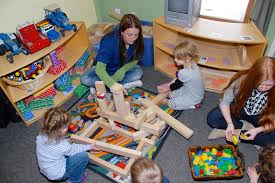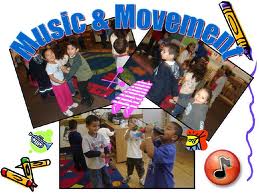CURRICULUM

 The Creative Curriculum System for Preschool is a research-based system that provides early childhood programs a comprehensive collection of resources. It is a project-based early childhood curriculum designed to foster the development of the whole child through teacher-led small and large group activities. Its underlying philosophy draws from Jean Piaget's work on cognitive development, Erik Erikson's stages of socio-emotional development, and accepted theories of how children learn best. It takes advantage of children’s natural curiosity, and uses real-life experiences to teach students, based on the idea that students are better able to retain knowledge through personal experience with their environment/play, and analytical thinking. Weekly themes and daily activities help structure what the children learn.
The Creative Curriculum System for Preschool is a research-based system that provides early childhood programs a comprehensive collection of resources. It is a project-based early childhood curriculum designed to foster the development of the whole child through teacher-led small and large group activities. Its underlying philosophy draws from Jean Piaget's work on cognitive development, Erik Erikson's stages of socio-emotional development, and accepted theories of how children learn best. It takes advantage of children’s natural curiosity, and uses real-life experiences to teach students, based on the idea that students are better able to retain knowledge through personal experience with their environment/play, and analytical thinking. Weekly themes and daily activities help structure what the children learn.
The curriculum provides information on child development, working with families, and organizing the classroom around 11 interest areas, to provide experiences that promote cognitive, social, physical and language development. The curriculum’s foundation is 38 core objectives that focus on learning skills within the following important developmental areas:
| Social-Emotional | Mathematics |
| Language | Arts (visual, music, dance, & drama) |
| Cognitive | English Language Acquisition |
| Literacy | Science and Technology |
| Physical (fine and gross motor) |
The objectives are fully aligned with state and national early learning standards, including the Nebraska Early Learning Guidelines for Ages 3 to 5 (which address the seven domains of Social and Emotional Development; Approaches to Learning; Health and Physical Development; Language and Literacy; Mathematics; Science; and Creative Arts). 
The Creative Curriculum System for Preschool resources include information about how children learn, resource for daily activities, an assessment system called Teaching Strategies GOLD; as well as resources to support and strengthen family connections. It is the leading curricular model used by Head Start programs, according to a survey by the National Head Start Association (2000), and it is also used by school districts nationwide.
Creative Curriculum is comprehensive, focusing on multiple content areas through daily activities. It guides teachers in ways to challenge children in their learning, through the use of multiple teaching approaches including asking children questions, talking to them about what they are doing, and challenging their thinking.
The Teaching Strategies for Early Childhood site indicates that Teaching Strategies GOLD “was created following an extensive, literature-based research review of some of the most recent works in the field of early childhood education: the Child Trends School Readiness Predictors research (2006, the work of the National Early Literacy Panel (2009), the Pathways Mapping Initiative (2007), and many individual research studies describing predictors of school success. Additionally, each of the 38 objectives contained in Teaching Strategies GOLD were selected based on further review and to answer the following two questions: 1) Is this a key predictor of school success? And 2) Is this an outcome valued in most state early learning standards?” (www.teachingstrategies.com/page/GOLDFAQ).
 The objectives related to language include listening to and understanding increasingly complex language (e.g., follows directions); using language to express thoughts and needs (e.g., uses conventional grammar); and using appropriate conversational and other communication skills (e.g., engages in conversations; uses social rules of language).
The objectives related to language include listening to and understanding increasingly complex language (e.g., follows directions); using language to express thoughts and needs (e.g., uses conventional grammar); and using appropriate conversational and other communication skills (e.g., engages in conversations; uses social rules of language).
The objectives for learning related to literacy are demonstrating phonological awareness (noticing and discriminating rhyme, alliteration and smaller units of sound); demonstrating knowledge of the alphabet; demonstrating knowledge of print and its uses; comprehending and responding to books and other texts (e.g., retells stories; interacts during read-alouds and book conversations); and demonstrating emergent writing skills.




